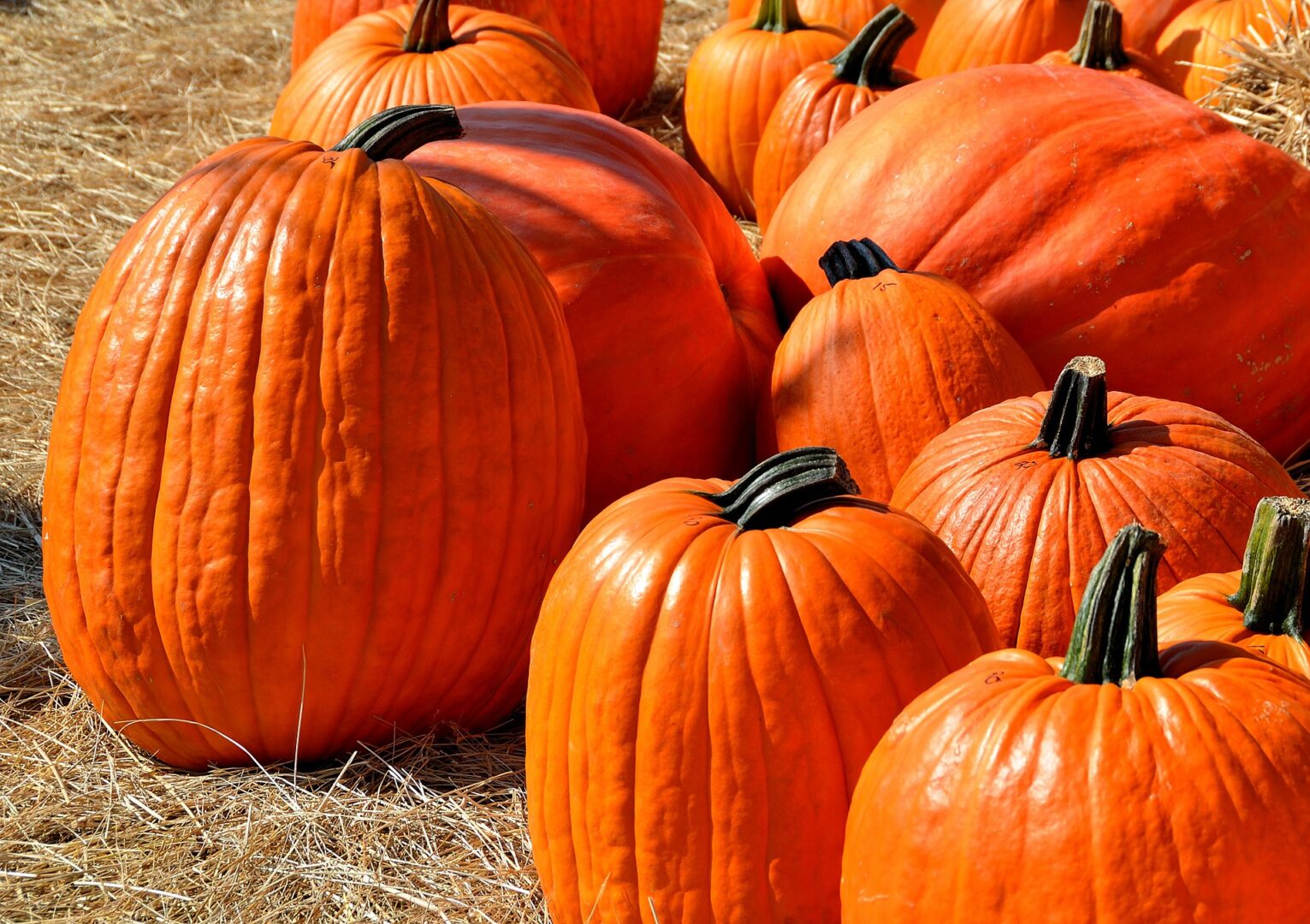I’ve had several customers this week asking about growing pumpkins—and when to plant for a Halloween harvest. So here’s some information about pumpkins…
Pumpkins are members of the cucurbit family—that means they are related to squash, cucumbers, and melons. They were a food crop cultivated by Native Americans long before the European settlers ever arrived. Pumpkin seeds, dated between 7000 and 5500 B. C. have been found in Central America.
The largest pumpkin that has ever grown (officially) weighed 1,140 pounds. The largest pumpkin pie was over five feet in diameter and weighed 350 pounds (do you want whipped cream on that?).
The tradition of carving pumpkins started with Irish immigrants to America. In Europe, they traditionally carved turnips and rutabagas to hold candles to ward off evil spirits on All Hallow’s Eve. When they came to America, they found the pumpkin to be much easier to carve.
How to Grow Your Own Vegetables
To grow your own pumpkins you need full sun and a lot of space. Pumpkins produce both male and female flowers and require pollination by bees in order to set fruit. If yours have been blooming and you see tiny little pumpkins that are turning yellow and dropping off, that means they did not get pollinated. In that case, you may need to step in and pollinate by hand—easy to do with a little water-color paintbrush.
Pumpkins are heavy feeders and should be fed regularly (follow the label directions on your fertilizer). Keep well-watered as they do not like to go bone-dry, but try to keep water off the foliage and fruit as it can encourage fungal problems.
If you are growing a pumpkin for size, wait until a vine has produced two or three large ones, then pinch off any flowers that form after that so the plant will put energy into the remaining fruits. You may want to set the fruits on plywood to keep them off the ground. Be sure you plant a pumpkin variety that will get large—such as Big Max or Atlantic Giant.
If you want to harvest around Halloween, then you need to start your seeds a little over four months ahead of time—here start seeds around the third week of June. If you plant them sooner, that’s okay, but your pumpkins will be ready sooner. For small varieties like Sugar Pies and Jack-be-Little, start them about three months ahead of time—around mid-end July here.
Pumpkins are ready to harvest when the rind has hardened and resists your fingernail when you press.
Pumpkins are easy and fun to grow. I grew my first pumpkins when I was six years old. My Dad gave me a little three-foot square patch in the garden and asked me what I wanted to grow. When I told him I wanted to grow pumpkins, he smiled. Later that summer, I learned the reason for the smile—every time he mowed the lawn, I had to go outside and hold up the vines that were trailing out into the yard. Still, I got enough pumpkins to set up a table in the front yard and sell them for 25 cents each.
So why not survey your yard now to identify the best spot for your pumpkin growing adventure? If you have children, get them involved in the fun! Children or not, pumpkins are a great addition to your fall harvest.


you should update your pumpkin growing page seems very out dated “The largest pumpkin that has ever grown (officially) weighed 1,140 pounds. The largest pumpkin pie was over five feet in diameter and weighed 350 pounds (do you want whipped cream on that?).” the largest pumpkin ever grown weighed 2624.6 pounds the 1140 record was grown by Dave Stelts in 2000 and has been eclipsed many times.
Thanks for your comment. I’ll certainly use updated info next time I write another pumpkin blog.
Thanks,
Bonnie
Thank you for the tips. Looking forward to trying pumpkins with the grandkids:)